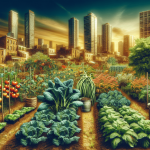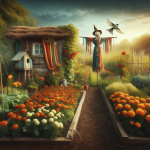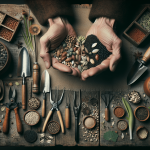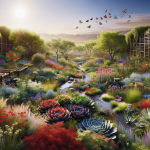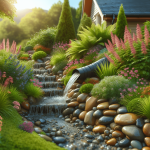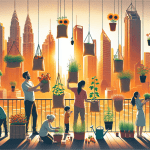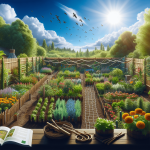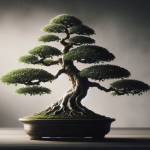This post may contain affiliate links. As an Amazon Associate, we may earn commissions from qualifying purchases.
Imagine stepping outside into your garden and being greeted by the fluttering wings of colorful butterflies, the gentle hum of buzzing bees, and the delightful sight of vibrant flowers. If you’ve ever wondered about the secret to attracting pollinators to your garden, you’ve come to the right place. This article will uncover a plethora of simple and effective techniques that will help transform your garden into a haven for these vital creatures. So, grab your gardening gloves and let’s embark on a journey that will not only beautify your outdoor space but also nurture a thriving ecosystem.
Plant a Variety of Flowers
When attracting pollinators to your garden, it’s important to choose a mix of flowers that bloom at different times throughout the year. This way, you can provide a continuous source of nectar and pollen for various pollinators. Be sure to include native flowers in your garden, as they are known to attract pollinators effectively. Native flowers are well-adapted to the local environment and provide a familiar food source for local pollinators. Additionally, incorporating flowers with different shapes and sizes will attract a wide range of pollinators. Some pollinators are specifically attracted to certain flower structures, so having a diverse selection of flowers will maximize your chances of attracting different species of pollinators.
Provide Shelter and Nesting Sites
In order to create a welcoming habitat for pollinators, it’s important to provide them with shelter and nesting sites. Creating areas of dense vegetation will not only provide shelter but also act as a windbreak, making the environment more comfortable for pollinators. You can also incorporate rocks, logs, or piles of branches in your garden to create nesting sites for bees and butterflies. These structures provide safe spaces for pollinators to lay their eggs and raise their young. Additionally, it’s crucial to provide water sources for pollinators, such as birdbaths or shallow dishes. Bees, in particular, need access to water for drinking purposes.
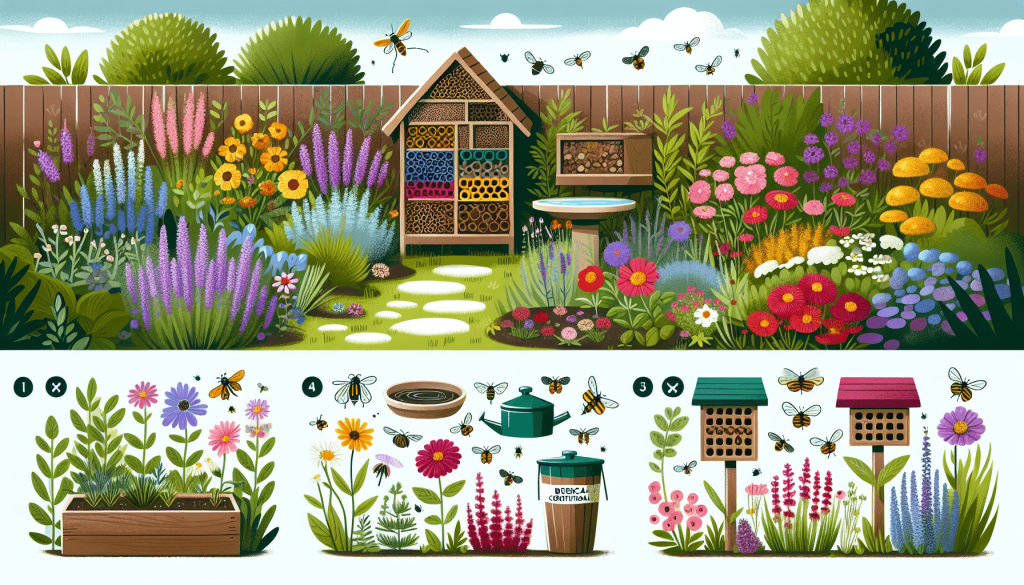
Avoid Pesticides
Pesticides can be harmful to pollinators, so it’s important to avoid using them in your garden. Instead, opt for organic pest control methods or natural alternatives. These methods are not only safer for pollinators but also for other beneficial insects in your garden. If you must use pesticides, use them sparingly and carefully follow the instructions to minimize any potential harm to pollinators. It’s crucial to prioritize the health and well-being of these important creatures when maintaining a garden.
Plant Native Plants
When it comes to attracting pollinators, planting native plants is a key strategy. Native plants have coevolved with local pollinators and are therefore better adapted to their needs. They provide a reliable source of food and habitat for these pollinators. It’s important to research which native plants are best suited for your specific area and include them in your garden. Native plants often require less maintenance and water once established since they are already well adapted to the local climate and conditions.
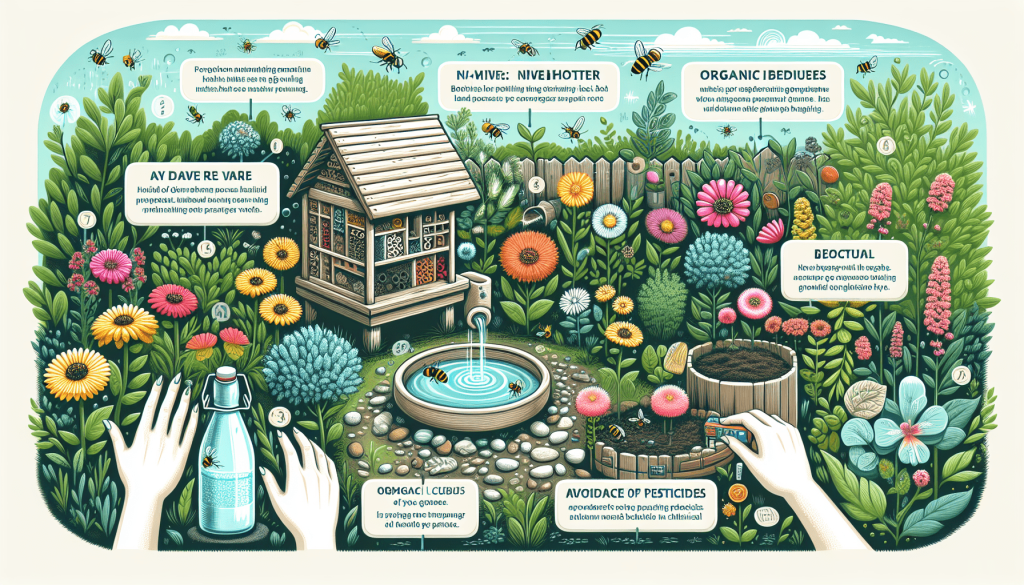
Provide a Variety of Food Sources
To attract a diverse range of pollinators, it’s important to provide them with a variety of food sources. Plant flowers that not only provide nectar but also pollen for pollinators to consume. Nectar serves as a carbohydrate-rich energy source, while pollen is a vital protein source for many pollinators. Including a mix of flower colors in your garden will attract different types of pollinators, as they are often drawn to specific colors. Additionally, consider planting specific host plants for butterfly larvae to feed on. These plants act as food sources for caterpillars and support the complete life cycle of butterflies.
Create a Bee-Friendly Habitat
Bees are some of the most important pollinators, and creating a bee-friendly habitat is crucial for their well-being. Providing nesting sites for solitary bees is essential. You can do this by incorporating drilled wooden blocks or bee hotels in your garden. These structures offer safe spaces for solitary bees to lay their eggs. It’s also important to allow some areas of bare soil for ground-nesting bees to create their nests. Many species of bees prefer to nest in the ground, so keeping some patches of bare soil will provide them with suitable nesting sites. Lastly, avoid clearing away leaf litter, as some bees use it for nest construction and protection.
Opt for Organic Practices
Using organic fertilizers and compost is not only beneficial for your plants but also for pollinators. Organic practices enrich the soil without the use of synthetic chemicals that can be harmful to both pollinators and plants. Additionally, instead of relying on chemical pesticides, encourage natural pest control methods. This can be done by attracting beneficial insects, such as ladybugs and lacewings, who act as natural predators to garden pests. By choosing organic practices, you create a healthier and safer environment for pollinators to thrive.
Plant in Clusters
Planting flowers in clusters or groups can significantly enhance their visibility and attractiveness to pollinators. Clusters of flowers make it easier for pollinators to locate and access the nectar and pollen they need. By grouping plants of the same species together, you can also aid in pollination, as pollinators tend to move more efficiently between plants of the same species. This improves their chances of successfully transferring pollen and fertilizing flowers. Creating clusters in your garden will greatly enhance its appeal to pollinators.
Create a Butterfly Garden
Butterflies are not only beautiful but also important pollinators. To attract these majestic creatures to your garden, it’s important to create a butterfly-friendly habitat. Including host plants for caterpillars is crucial, as these plants serve as food sources for butterfly larvae. For example, including milkweed plants in your garden will attract monarch butterflies, as they are the exclusive host plant for their caterpillars. Additionally, planting flowers with flat landing surfaces will make it easier for butterflies to access the nectar. Lastly, provide sunning spots such as flat rocks or logs for butterflies to bask in the sun and warm their wings.
Maintain a Healthy Garden
To continue attracting and supporting pollinators in your garden, it’s essential to maintain its health. Keeping your garden free from weeds is important, as weeds can compete with your flowers for resources and attract pests. Regularly removing spent flowers and dead plants will encourage new growth and ensure a continuous food source for pollinators. Additionally, it’s important to monitor your garden for pests or diseases and take prompt action to prevent their spread. By maintaining a healthy garden, you create an environment where pollinators can thrive and contribute to the overall success of your garden ecosystem.
In conclusion, attracting pollinators to your garden is a rewarding and beneficial endeavor. By following these tips and creating a diverse and inviting habitat, you can contribute to the well-being of pollinators and the health of your garden ecosystem. Plant a variety of flowers, provide shelter and nesting sites, avoid pesticides, plant native plants, and provide a variety of food sources to attract and support pollinators. Additionally, create a bee-friendly habitat, opt for organic practices, plant in clusters, create a butterfly garden, and maintain a healthy garden. By implementing these strategies, you can enjoy a vibrant and thriving garden filled with the beauty and buzz of pollinators. Happy gardening!

